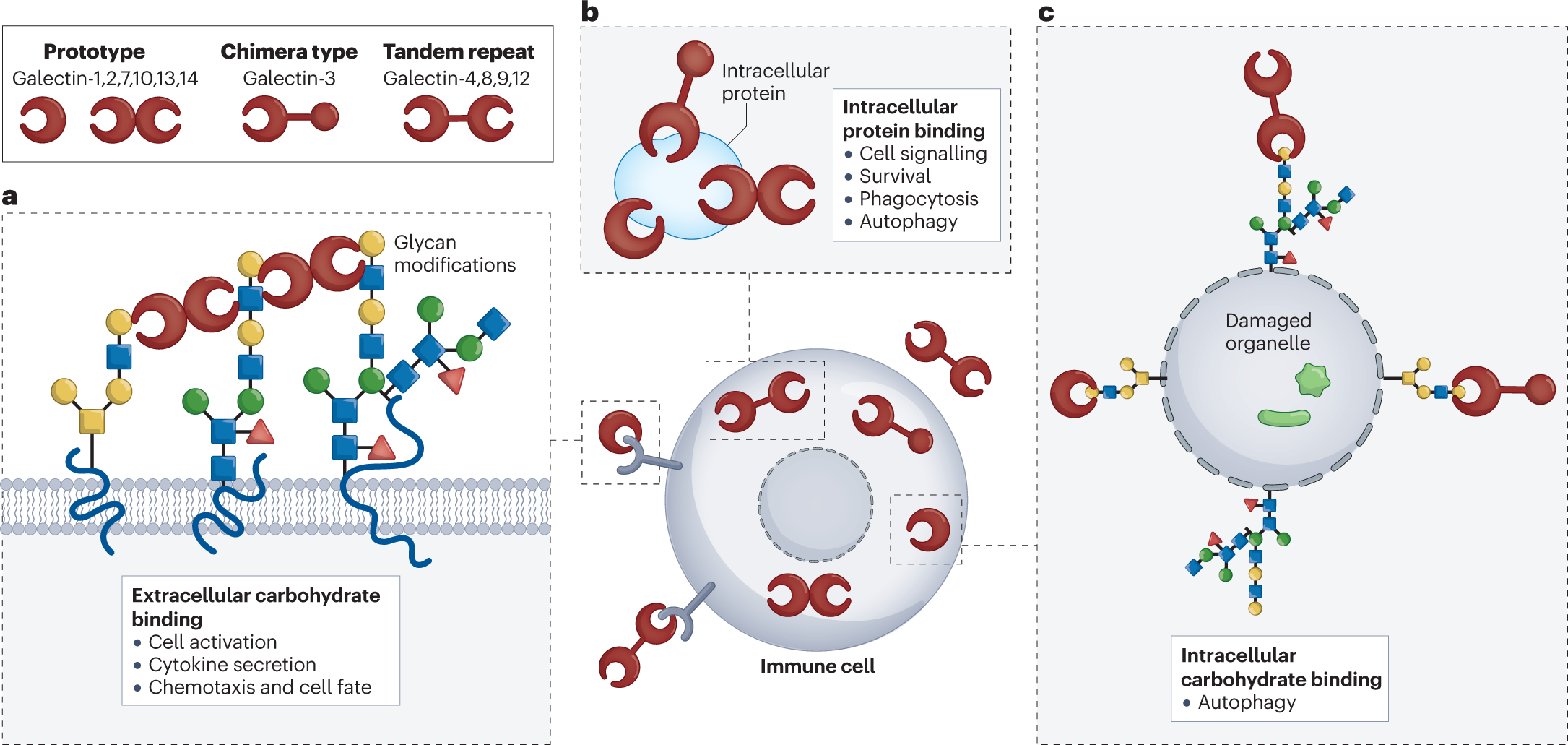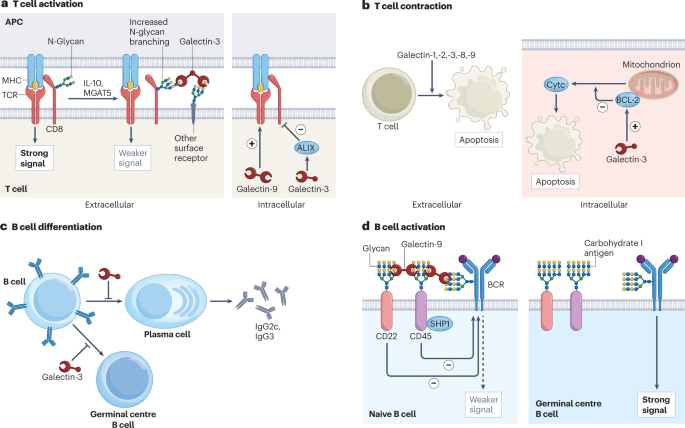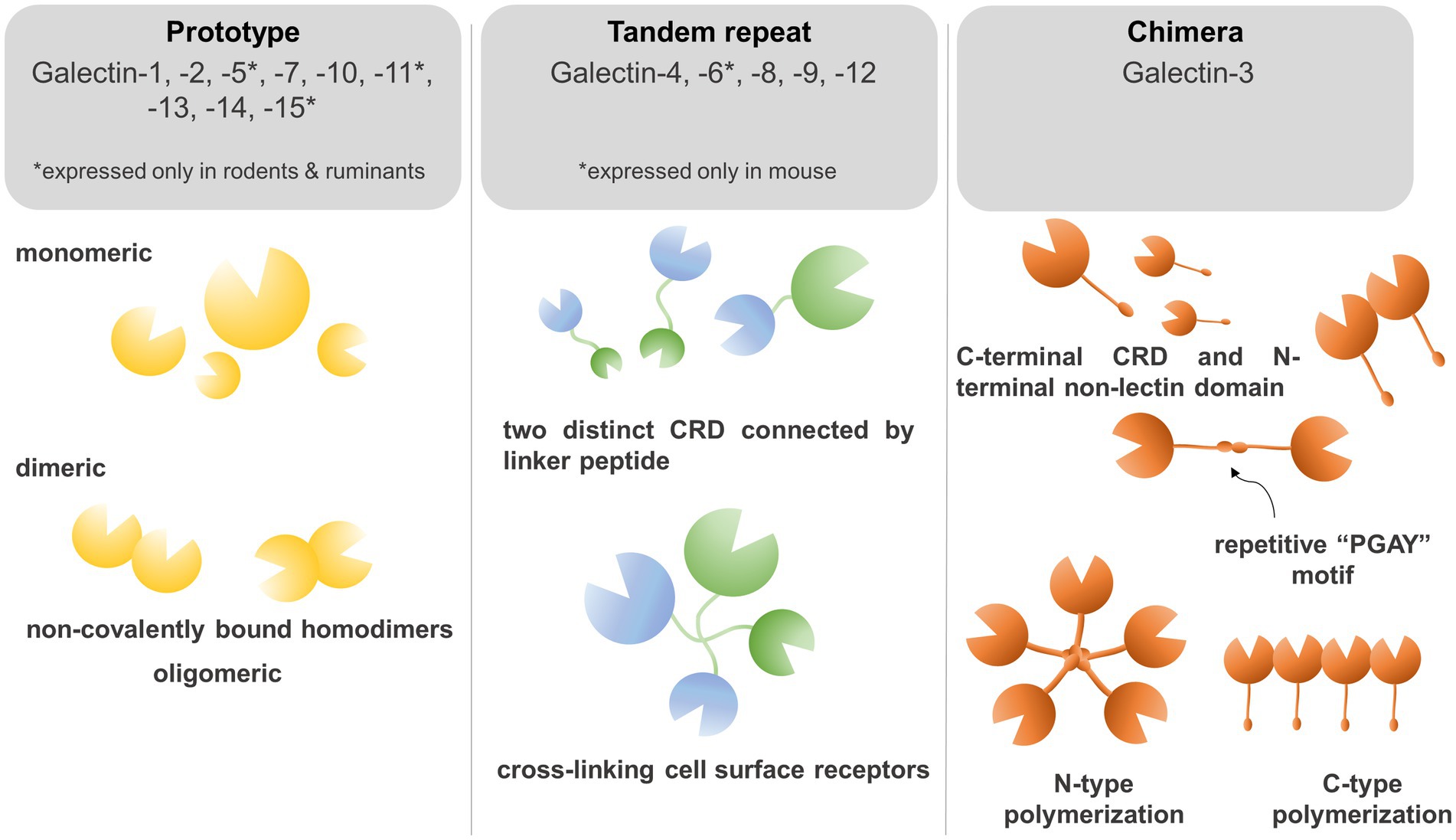Reference




Moonshot's Answer
Galectins and their ligands influence the inflammatory response through several mechanisms:
-
Modulation of Immune Cells: Galectins can modulate immune cells by binding to glycosylated proteins and lipids on the cell surface or intracellularly via carbohydrate recognition domains, affecting cell signaling and function 1.
-
Suppression of Chronic Inflammation: Therapeutic administration of galectin-1 has been shown to suppress T-cell-dependent chronic inflammation in conditions such as arthritis, hepatitis, and colitis 2.
-
Macrophage Function: Galectin-1 influences the ability of macrophages to control intracellular infections, either by inhibiting microbicidal activity or promoting pathogen survival 3.
-
Regulation of Immune Cell Homeostasis: Galectins and their ligands are implicated as master regulators of immune cell homeostasis, with different members of the galectin family playing various roles in inflammation 4.
-
Pro-inflammatory and Recovery Roles: Galectin-3 facilitates pro-inflammatory actions but also plays an important role during the recovery period after inflammation 5.
-
Cell Trafficking and Apoptosis: Galectin-1 is known to bestow anti-inflammatory effects on various cell types by inhibiting cell trafficking, inducing apoptosis, and modulating cell survival 6.
-
Neutrophil Migration and Removal: Galectin-3 increases neutrophil migration to inflamed tissues and participates in their removal, which is critical for terminating an inflammatory response 7.
-
Interaction with CD44: Through interaction with CD44, galectins may modulate cell adhesion to the extracellular matrix, endocytosis, inflammation, and immunomodulation 8.
These mechanisms highlight the complex and multifaceted role of galectins and their ligands in the inflammatory response, acting as amplifiers, silencers, or tuners of inflammation. Understanding these interactions is crucial for developing therapeutic strategies targeting inflammation and immune responses.